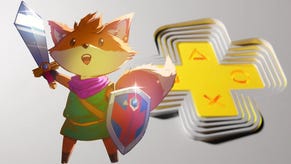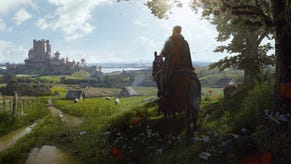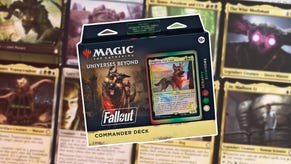Back in 1995 Dredges Up an Important Retro Aesthetic
This upcoming indie adventure takes us back to gaming's awkward teenage years.
This article first appeared on USgamer, a partner publication of VG247. Some content, such as this article, has been migrated to VG247 for posterity after USgamer's closure - but it has not been edited or further vetted by the VG247 team.
By design, nostalgia works with a 20-year delay. As we first-worlders start zeroing in on age 30, those obligation-free days of the past begin to look more and more attractive—luckily, by this milestone, most can afford to buy their childhood back in installments.
It's the reason pixel graphics have been en vogue since, well—since I can remember. And while plenty of indie games have gone for the chunky, 2D look to tug at the heartstrings of aging members of generation X and Y, in passing years, this aesthetic has gone from semi-cynical nostalgia to the revival of a seemingly lost art form. It's easy to look at pixel-based graphics as a way for developers to avoid making more resource-intensive visuals, but building representational art square-by-square isn't really too different from the field of mosaics—and without a skilled hand, it can go oh-so wrong.
Pixels certainly aren't going anywhere, but, as the years pass, we're beginning to see the first games from people who didn't necessarily grow up in an age where 2D graphics in video game were the norm. If you were born in, say, 1990—making you one of the dreaded Millennials the news warns us about—it's very likely you cut your teeth on the N64, PlayStation, or Saturn. And, as this group slowly approaches their 30s, it was only a matter of time before we saw a throwback to the clumsy and amateurish 3D graphics of the mid-90s. This is where Back in 1995 comes in—and, by all accounts, it completely nails the PlayStation retro vibe.
I'm sure it's possible to make arguments about how Back in 1995 is objectively ugly; after all, it's drawing from an era that featured the first polygonal attempts to make things look like what they're supposed to be. But in the same way well-drawn pixel graphics manage to generate significance via the careful arrangement of squares, early polygonal graphics had no choice but to use visual abstraction to give their clusters of shapes some sort of meaning. Since photorealism was pure fantasy, this era saw plenty of stylish shortcuts to overcome technical shortcomings—think of the sketchy, texture mapped faces of Metal Gear Solid characters, or the flat and vibrant world of Parappa the Rapper.
Of course, Back in 1995 is also capitalizing on early 3D graphics for another good reason: if used properly, they can be downright creepy. When I played 1998's Echo Night for our Retronauts podcast, I couldn't help but notice how much the PlayStation's primitive polygons added to its otherworldly atmosphere. And that's what I'm seeing with Back in 1995. The visuals aren't necessarily poorly constructed, but they do work within certain limitations that provide a unified style. I wouldn't want to see every game rendered in chunky 3D, mind you, but in the case of Back in 1995, it certainly works.
Though it's unreleased as of now, Back in 1995 made an appearance at this year's TGS and is due to hit PCs this winter. We'll definitely have more to say once it's fully playable.









